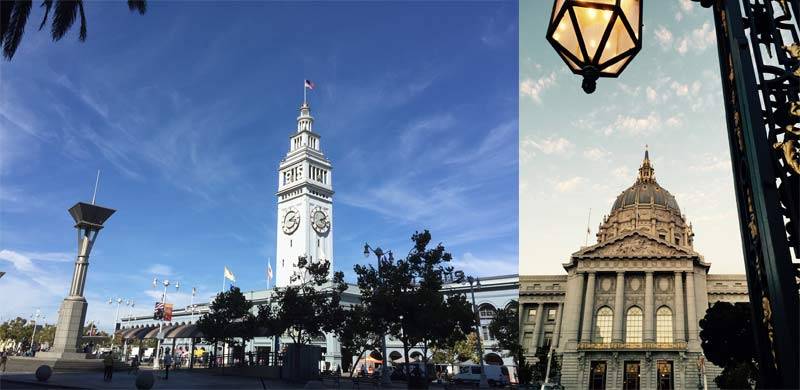
We had just walked across the iconic Bridge on the River Kwai in Thailand when we discovered a man playing music and singing songs on request. He asked us where we were from. When we said San Francisco, he immediately started playing the Toni Bennet song, “I left my heart in San Francisco.”
The lyrics had a hypnotic effect on me, transporting me back to the city which I had first visited in 1974. It was common knowledge that the columnist Herb Caen had dubbed it “Baghdad by the Bay.” It was exotic and mysterious and every bit as charming as the fabled 12th century Baghdad of the Arabian Nights. Caen is reported to have said, “One day if I do go to heaven...I’ll look around and say, ‘It ain’t bad, but it ain’t San Francisco.”
San Francisco is built on seven hills like Rome, the Eternal City, but what gives it transcendent appeal is its location at the tip of the Pacific Ocean. What makes San Francisco unique is the mysterious fog that blankets it from time to time. Its weather allegedly led Mark Twain to quip, “The coldest winter I ever spent was a summer I spent in San Francisco.”

San Francisco is connected eastward by the iconic Bay Bridge to the cities of Berkeley and Oakland at one end and southward to the cities of Silicon Valley. It is considered by many to be the heart of the Bay Area, the jewel of California, and America’s gateway to Asia.
The city’s attractions are many and varied. Here are my favorites. First is the walk along the Embarcadero. You can begin south of the Bay Bridge, close to the AT&T stadium, and walk under the bridge, go past a number of piers, walk further out into the Bay on Pier 14, watch the big cargo ships go by, laden with merchandise from China and Korea, sample incredible food in the Ferry Building which is home to countless restaurants, and end up at Pier 39. If you wish, you can go onto Fisherman’s Wharf, perhaps the City’s major tourist attraction.
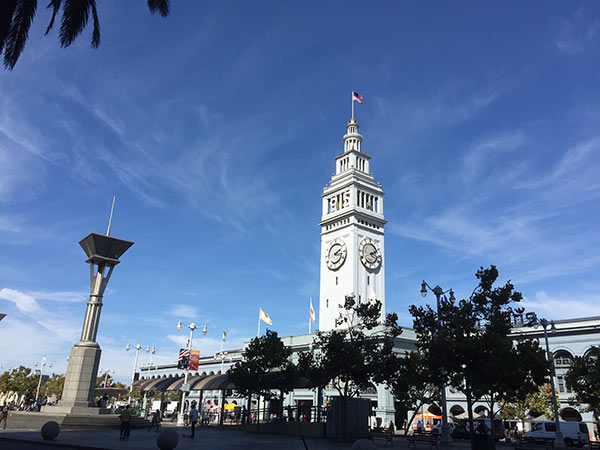
The second attraction involves continuing the walk, going past the Marina, and then walking on the most iconic bridge in the US, the Golden Gate Bridge. The views of the Pacific Ocean on one side and of the City on the other are mesmerizing.
But be prepared for invisibility. In 1984, when my brother was visiting us for the first time from Lahore we took him there one evening. We were standing at the foot of the bridge but it was totally enveloped by fog. I had to convince him the bridge was there by bringing him by on another day. Also worth visiting is the Presidio, the site of an old military base. After you cross the Bridge, you can check out the Marin Headlands and the sweeping views of the Pacific that they provide. Also in that area are old naval guns and batteries.
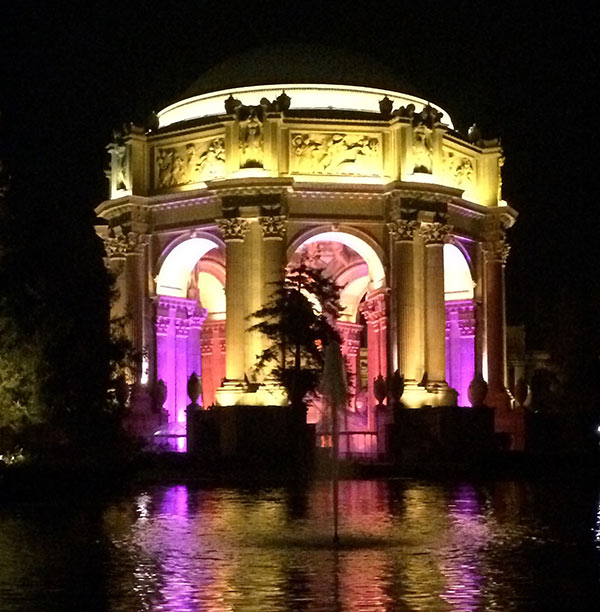
The third attraction is the cruise to Alcatraz (“Pelicans”), the former military base and later dreaded federal penitentiary which housed some of history’s most notorious criminals. It has been featured in many movies including one that featured Sean Connery. The prison is located atop a hill. If you climb to the top of the hill, you will be afforded sweeping views of the City. Not too far away is Angel Island, which is also worth a visit.
The fourth attraction is the Legion of Honor, modeled after a neoclassical structure in France. It houses a collection spanning more than 6,000 years of ancient and European Art. The building is an architectural marvel. It also provides an incredible view of the Golden Gate Bridge on one side and of central San Francisco on the other side. There is a statue of El Cid one side of the entrance and of Joan of Arc on the other side. Rodin’s cast of the Thinker graces the entrance.
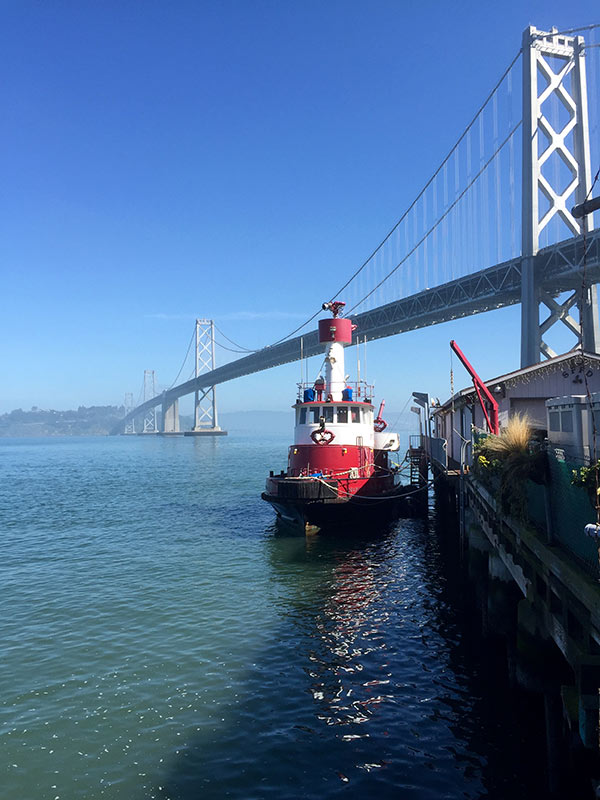
The fifth attraction is the 210-foot Coit Tower located on top of Telegraph Hill. Built in 1933, the white deco shaft provides the best 360-degree views of the City. As a teenager in Karachi, I first saw it in the opening sequence of the TV series Ironsides starring Raymond Burr. It’s featured in Hitchcock’s film, Vertigo, which is largely set in San Francisco. On the other side of the tower is Lombard Street, which has eight hairpin turns in a block, earning it the moniker of being the most crooked street in the world.
The sixth attraction is the Asian Art Museum, which houses the largest viewable collection of Asian art outside of Asia. The incredible collection is focused on the spread of Buddhism from India to Indonesia. Also on display are 3,000 Zoroastrian artifacts from Iran, Balinese shadow puppets, racy Rajasthan palace miniatures, Chinese Jade jewelry in boxes and priceless Ming vases, and sculptural baskets from Japan. It also has a great café featuring Asian cuisine. Directly opposite the museum is City Hall, which is taller than the US Capitol building in Washington, DC by 42 feet. It’s beautifully lit up at night. Many movies have been shot there, including Dirty Harry, Indiana Jones and the Invasion of the Body Snatchers. Nearby are located the Herbst Theater, a Performing Arts Center, the San Francisco Opera, and the San Francisco Symphony. It’s the cultural epicenter of the city.
The seventh attraction is Golden Gate Park, which is not just a park but home to many museums including the California Academy of Sciences. Don’t miss out on the Japanese tea garden, the Botanical Garden, and the Dutch wind mill.
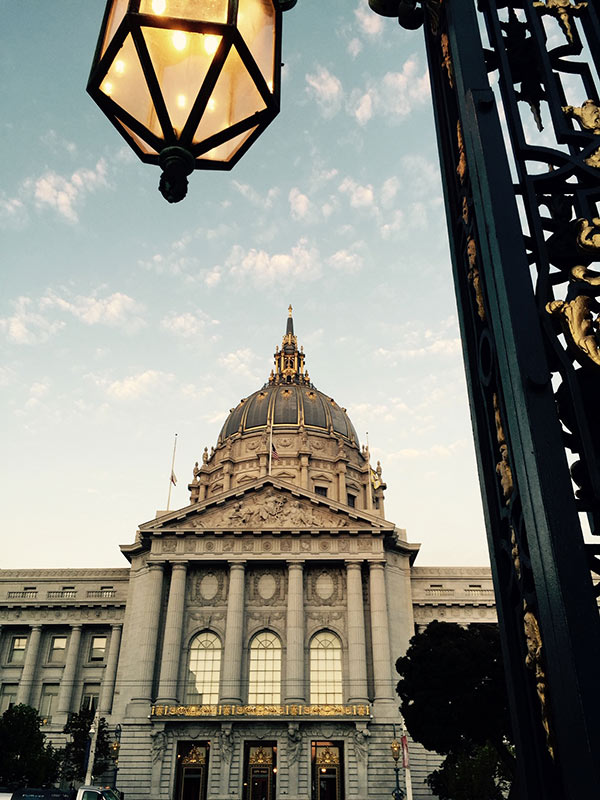
San Francisco offers many other attractions besides these seven, including the shops at Union Square, the eateries in the Fillmore district, site of the eponymous Jazz festival in July, the imposing Mission Dolores and the adjacent park, and the Castro Theater. The City also has the largest China Town in the US and a very genuine Japan Town. And don’t forget the painted ladies at Alamo Square.
The City by the Bay is also a haven for foodies of every persuasion. There is something to suit every taste, from Greek to Vietnamese, from French to Chinese, from Pakistani to Arabian.
If you run out of things to do, jump on one of the photogenic Cable Cars and enjoy the City’s numerous breathtaking views, as do the 25 million tourists who come every year.
The lyrics had a hypnotic effect on me, transporting me back to the city which I had first visited in 1974. It was common knowledge that the columnist Herb Caen had dubbed it “Baghdad by the Bay.” It was exotic and mysterious and every bit as charming as the fabled 12th century Baghdad of the Arabian Nights. Caen is reported to have said, “One day if I do go to heaven...I’ll look around and say, ‘It ain’t bad, but it ain’t San Francisco.”
San Francisco is built on seven hills like Rome, the Eternal City, but what gives it transcendent appeal is its location at the tip of the Pacific Ocean. What makes San Francisco unique is the mysterious fog that blankets it from time to time. Its weather allegedly led Mark Twain to quip, “The coldest winter I ever spent was a summer I spent in San Francisco.”

San Francisco is connected eastward by the iconic Bay Bridge to the cities of Berkeley and Oakland at one end and southward to the cities of Silicon Valley. It is considered by many to be the heart of the Bay Area, the jewel of California, and America’s gateway to Asia.
The city’s attractions are many and varied. Here are my favorites. First is the walk along the Embarcadero. You can begin south of the Bay Bridge, close to the AT&T stadium, and walk under the bridge, go past a number of piers, walk further out into the Bay on Pier 14, watch the big cargo ships go by, laden with merchandise from China and Korea, sample incredible food in the Ferry Building which is home to countless restaurants, and end up at Pier 39. If you wish, you can go onto Fisherman’s Wharf, perhaps the City’s major tourist attraction.

The second attraction involves continuing the walk, going past the Marina, and then walking on the most iconic bridge in the US, the Golden Gate Bridge. The views of the Pacific Ocean on one side and of the City on the other are mesmerizing.
But be prepared for invisibility. In 1984, when my brother was visiting us for the first time from Lahore we took him there one evening. We were standing at the foot of the bridge but it was totally enveloped by fog. I had to convince him the bridge was there by bringing him by on another day. Also worth visiting is the Presidio, the site of an old military base. After you cross the Bridge, you can check out the Marin Headlands and the sweeping views of the Pacific that they provide. Also in that area are old naval guns and batteries.

The third attraction is the cruise to Alcatraz (“Pelicans”), the former military base and later dreaded federal penitentiary which housed some of history’s most notorious criminals. It has been featured in many movies including one that featured Sean Connery. The prison is located atop a hill. If you climb to the top of the hill, you will be afforded sweeping views of the City. Not too far away is Angel Island, which is also worth a visit.
The fourth attraction is the Legion of Honor, modeled after a neoclassical structure in France. It houses a collection spanning more than 6,000 years of ancient and European Art. The building is an architectural marvel. It also provides an incredible view of the Golden Gate Bridge on one side and of central San Francisco on the other side. There is a statue of El Cid one side of the entrance and of Joan of Arc on the other side. Rodin’s cast of the Thinker graces the entrance.

The fifth attraction is the 210-foot Coit Tower located on top of Telegraph Hill. Built in 1933, the white deco shaft provides the best 360-degree views of the City. As a teenager in Karachi, I first saw it in the opening sequence of the TV series Ironsides starring Raymond Burr. It’s featured in Hitchcock’s film, Vertigo, which is largely set in San Francisco. On the other side of the tower is Lombard Street, which has eight hairpin turns in a block, earning it the moniker of being the most crooked street in the world.
The sixth attraction is the Asian Art Museum, which houses the largest viewable collection of Asian art outside of Asia. The incredible collection is focused on the spread of Buddhism from India to Indonesia. Also on display are 3,000 Zoroastrian artifacts from Iran, Balinese shadow puppets, racy Rajasthan palace miniatures, Chinese Jade jewelry in boxes and priceless Ming vases, and sculptural baskets from Japan. It also has a great café featuring Asian cuisine. Directly opposite the museum is City Hall, which is taller than the US Capitol building in Washington, DC by 42 feet. It’s beautifully lit up at night. Many movies have been shot there, including Dirty Harry, Indiana Jones and the Invasion of the Body Snatchers. Nearby are located the Herbst Theater, a Performing Arts Center, the San Francisco Opera, and the San Francisco Symphony. It’s the cultural epicenter of the city.
The seventh attraction is Golden Gate Park, which is not just a park but home to many museums including the California Academy of Sciences. Don’t miss out on the Japanese tea garden, the Botanical Garden, and the Dutch wind mill.

San Francisco offers many other attractions besides these seven, including the shops at Union Square, the eateries in the Fillmore district, site of the eponymous Jazz festival in July, the imposing Mission Dolores and the adjacent park, and the Castro Theater. The City also has the largest China Town in the US and a very genuine Japan Town. And don’t forget the painted ladies at Alamo Square.
The City by the Bay is also a haven for foodies of every persuasion. There is something to suit every taste, from Greek to Vietnamese, from French to Chinese, from Pakistani to Arabian.
If you run out of things to do, jump on one of the photogenic Cable Cars and enjoy the City’s numerous breathtaking views, as do the 25 million tourists who come every year.
